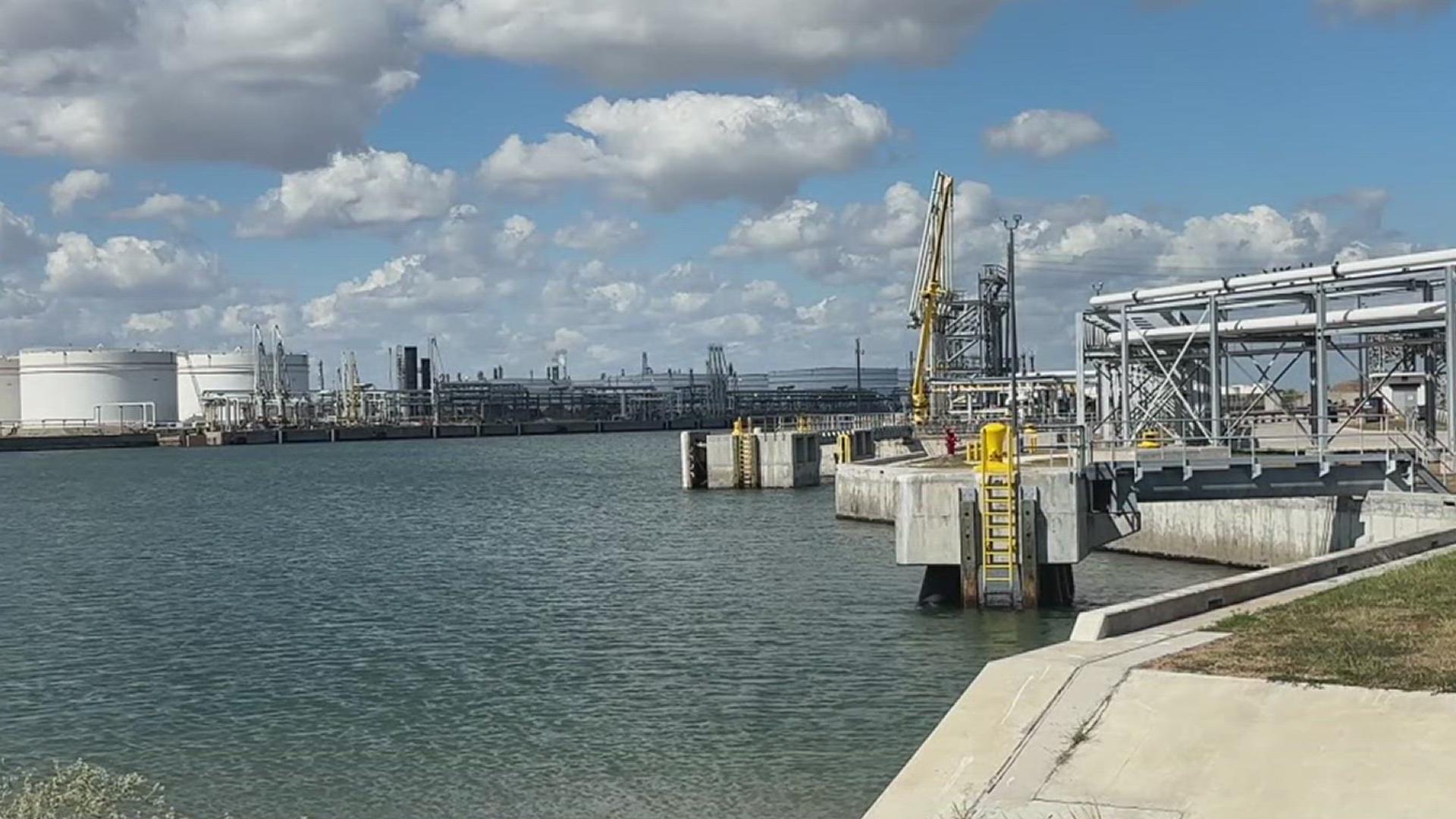EAI Water Expands into the Southeastern United States with Strategic Acquisition of LaMotte Water Management – Business Wire

Economic Alternatives, Inc. Expands Water Treatment Services with Acquisition of LaMotte Water Management
Introduction
Economic Alternatives, Inc. (EAI Water), a leading provider of custom-engineered water treatment solutions, has announced the acquisition of LaMotte Water Management, a prominent water treatment company based in Williamsburg, Virginia. This strategic move enhances EAI’s presence in the Mid-Atlantic region and reinforces its position as a coast-to-coast leader in industrial water treatment services.
Company Backgrounds and Strategic Alignment
-
LaMotte Water Management
- Founded in 2007 by Lex LaMotte.
- Specializes in consulting and servicing water treatment systems for cooling towers and boilers.
- Focuses on chemicals and green technology solutions.
- Serves commercial and industrial clients across the Mid-Atlantic, including Virginia, North Carolina, Maryland, and Washington D.C.
- Known for reliable, consistent, and personalized service.
-
EAI Water
- Headquartered in Walnut, California.
- Industry-leading water solutions provider since 1986.
- Offers a full range of water treatment technologies and services across multiple states including California, Arizona, Nevada, Utah, Washington, and Ohio.
- Utilizes proprietary chemical, membrane, and disinfectant technologies as part of its Total Water methodology.
- Committed to saving water, reducing costs, and ensuring long-term operational excellence.
Acquisition Details and Benefits
- The acquisition represents EAI’s second strategic expansion in 2025.
- Extends EAI’s Total Water methodology to hundreds of new commercial and industrial customers in the Mid-Atlantic.
- LaMotte Water customers gain immediate access to:
- Expanded chemical inventory.
- Proprietary membrane and disinfectant solutions.
- Enhanced service capabilities while maintaining personalized customer service.
- Strengthens service infrastructure and equipment manufacturing, particularly in ozone specialty.
Commitment to Sustainable Development Goals (SDGs)
This acquisition aligns strongly with several United Nations Sustainable Development Goals, including:
- SDG 6: Clean Water and Sanitation
- By enhancing water treatment capabilities, the partnership supports sustainable management of water resources and ensures availability of clean water for industrial and commercial use.
- Promotes green technology and chemical solutions that minimize environmental impact.
- SDG 9: Industry, Innovation, and Infrastructure
- Combining proprietary technologies and expanded service infrastructure fosters innovation in water treatment.
- Supports resilient infrastructure and sustainable industrialization through advanced water management solutions.
- SDG 12: Responsible Consumption and Production
- Focus on reducing water consumption and operational costs aligns with sustainable consumption practices.
- Encourages efficient use of resources and waste reduction in water treatment processes.
- SDG 17: Partnerships for the Goals
- The merger exemplifies effective partnerships that leverage combined expertise and resources to advance sustainable water management.
Leadership Perspectives
“Since 2007, the LaMotte Water team has been committed to providing reliable, consistent, and personalized service to our customers. By partnering with EAI Water, we’re enhancing our ability to deliver on that promise with an expanded team, a stronger support system, and expanded equipment manufacturing service for our ozone specialty. I’m excited to support EAI’s growth into the Mid-Atlantic region and look forward to building the service capabilities for our customers,” said Lex LaMotte, founder of LaMotte Water.
“There are very few Lex LaMottes in the world today, and we are excited to welcome him, his expertise, and his team into the EAI family. The LaMotte Water and EAI Water partnership represents a merger of two great companies and we’re looking forward to how we can better serve our customers, and the broader water industry, with our expansion into the Mid-Atlantic region.”
Conclusion
The acquisition of LaMotte Water Management by Economic Alternatives, Inc. represents a significant advancement in delivering sustainable, innovative, and client-focused water treatment solutions. By integrating their strengths, both companies are positioned to contribute meaningfully to the achievement of global Sustainable Development Goals, particularly in clean water access, sustainable industry, and responsible resource management.
Additional Information
- For more information about EAI Water and its services, visit www.eaiwater.com.
- For more information about LaMotte Water, visit www.lamottewater.com.
1. Sustainable Development Goals (SDGs) Addressed or Connected
- SDG 6: Clean Water and Sanitation
- The article focuses on water treatment solutions, improving water quality, and managing water resources efficiently.
- SDG 9: Industry, Innovation, and Infrastructure
- The companies provide innovative water treatment technologies and infrastructure services to industrial and commercial clients.
- SDG 12: Responsible Consumption and Production
- The Total Water methodology aims to save water and money, promoting sustainable consumption of water resources.
2. Specific Targets Under Those SDGs Identified
- SDG 6 Targets
- 6.3: Improve water quality by reducing pollution and minimizing release of hazardous chemicals.
- 6.4: Increase water-use efficiency across all sectors.
- 6.5: Implement integrated water resources management at all levels.
- SDG 9 Targets
- 9.4: Upgrade infrastructure and retrofit industries to make them sustainable, with increased resource-use efficiency.
- 9.5: Enhance scientific research and upgrade technological capabilities of industrial sectors.
- SDG 12 Targets
- 12.2: Achieve sustainable management and efficient use of natural resources.
- 12.5: Substantially reduce waste generation through prevention, reduction, recycling, and reuse.
3. Indicators Mentioned or Implied to Measure Progress
- For SDG 6
- Indicator 6.3.1: Proportion of wastewater safely treated – implied through water treatment and chemical management services.
- Indicator 6.4.1: Change in water-use efficiency over time – implied by the Total Water methodology’s focus on saving water.
- Indicator 6.5.1: Degree of integrated water resources management implementation – implied by the comprehensive water management solutions.
- For SDG 9
- Indicator 9.4.1: CO2 emission per unit of value added – implied by the upgrade of industrial water treatment technologies to more efficient systems.
- Indicator 9.5.1: Research and development expenditure as a proportion of GDP – implied by proprietary technologies and innovation in water treatment.
- For SDG 12
- Indicator 12.2.1: Material footprint, material footprint per capita, and material footprint per GDP – implied by efficient use of water and chemicals.
- Indicator 12.5.1: National recycling rate, tons of material recycled – implied by green technology and waste reduction in water treatment processes.
4. Table of SDGs, Targets, and Indicators
| SDGs | Targets | Indicators |
|---|---|---|
| SDG 6: Clean Water and Sanitation |
|
|
| SDG 9: Industry, Innovation, and Infrastructure |
|
|
| SDG 12: Responsible Consumption and Production |
|
|
Source: businesswire.com

What is Your Reaction?
 Like
0
Like
0
 Dislike
0
Dislike
0
 Love
0
Love
0
 Funny
0
Funny
0
 Angry
0
Angry
0
 Sad
0
Sad
0
 Wow
0
Wow
0













































































